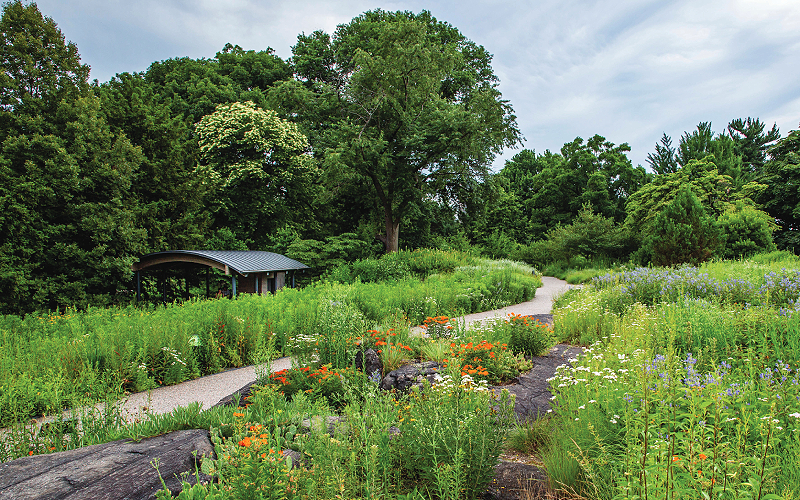New Research from the American Society of Landscape Architects (ASLA) Fund Shows Benefits of Nature-Based Solutions
 ASLA 2020 Professional General Design Honor Award. The Native Plant Garden at The New York Botanical Garden. New York, USA. OEHME, VAN SWEDEN | OvS / Ivo Vermeulen
ASLA 2020 Professional General Design Honor Award. The Native Plant Garden at The New York Botanical Garden. New York, USA. OEHME, VAN SWEDEN | OvS / Ivo VermeulenThe American Society of Landscape Architects (ASLA) Fund has released new peer-reviewed research on landscape architecture solutions to the biodiversity crisis.
The research was developed by Dr. Sohyun Park, ASLA, PhD, Assistant Professor, Department of Plant Science and Landscape Architecture, University of Connecticut. Dr. Park and her team won a competitive national grant from the ASLA Fund in 2023 to conduct the research.
“The biodiversity crisis is on par with the climate crisis. An estimated one million out of eight million species on the planet are threatened with extinction. Our research demonstrates that landscape architects play a significant role in designing and preserving green spaces that enhance and restore biodiversity and promote human well-being,” Dr. Park said.
“ASLA supports the global 30 x 2030 goals, which calls for preserving and restoring 30 percent of the world’s ecosystems by 2030. Sohyun’s research shows that landscape architects’ planning and design work is central to this global effort,” said ASLA CEO Torey Carter-Conneen. “The research demonstrates that we can design for biodiversity and start to restore the planet.”
Dr. Park and her team reviewed nearly 70 peer-reviewed studies focused on planning and designing nature-based solutions to biodiversity loss published from 2000 to 2023. They synthesized the findings in an executive summary, which includes case studies and project examples, and a research study.
Park and her team found that:
- Heterogeneity and diversity are critical components of healthy ecosystems.This goes beyond the diversity of animal and plant species to include built forms, landscapes, and water bodies.
- Landscape architects can design diverse landscapes and restore plant communities that mimic nature in both functional diversity and complexity of structure.
- These design strategies enhance insect, bird, reptile, and mammal biodiversity and improve the water retention capabilities of soils and green infrastructure.
- It is critical that stakeholders appreciate how everything connects within a socio-ecological system.
- Planners and policymakers should take a holistic view when setting biodiversity objectives and planning local or national initiatives.
Park and her team found that empirical research points to the success of these strategies in increasing and enhancing biodiversity:
Design for Biodiversity
- Incorporate Native Plants
- Support Pollinators
- Enable Integrated Pest Management
- Include Allelopathic and Companion Plants
- Incorporate Protected Areas
Transform Grey to Green
- Retrofit Grey Infrastructure to Be Green
- Design for Slope and Pitch
- Design for Building Height and Architecture
- Create Bio-solar Roofs
Build Strong Community Coalitions on Biodiversity
- Create community partnerships that build trust with stakeholders
- Use participatory design processes to build social-ecological communities
- defined by a shared sense of bio-cultural heritage
- Include Indigenous groups and other community stakeholders in the design, biodiversity monitoring and stewardship, and decision-making processes
Access Executive Summary (PDF)
Access Research Study (PDF)